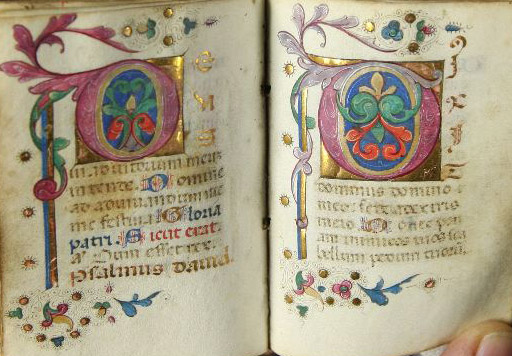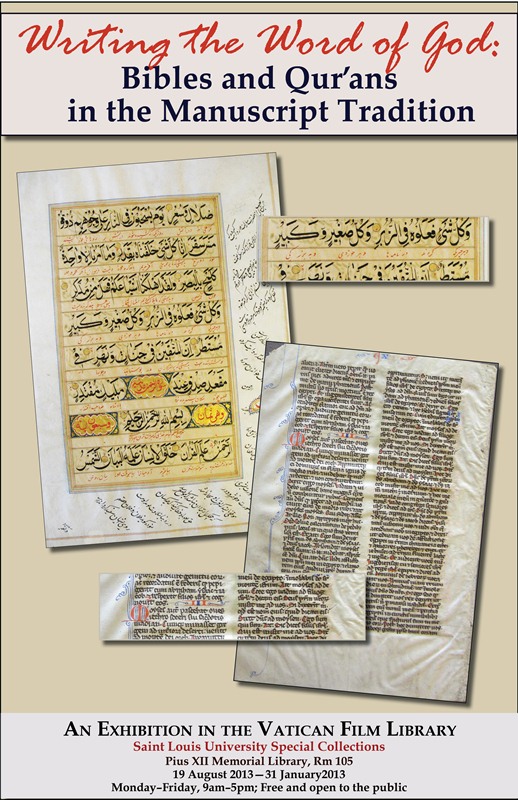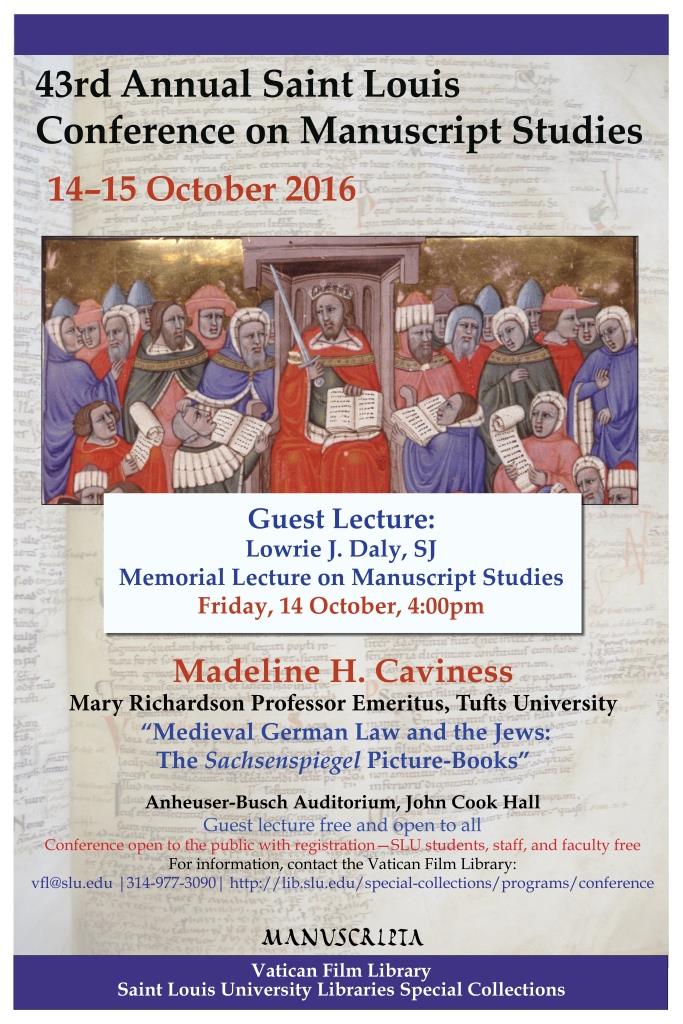Exploring the Manuscript Page: Scripts and Decoration around the World
An exhibition in the Vatican Film Library in Pius XII Memorial Library
13 February – 30 June 2017
The Knights of Columbus Vatican Film Library—part of Special Collections in the Saint Louis University Libraries—announces the opening of an exhibition of medieval and Renaissance manuscripts, “Exploring the Manuscript Page.”

This exhibit provides a survey of different handwritings and decoration styles in manuscripts from all over the world, dating from the thirteenth through the eighteenth centuries. Numerous writing systems were used for communication in the medieval period, each generally related to one or more spoken language. Early in the West the Roman alphabet was mainly used for texts in Latin, and later for literature produced in the vernacular languages of each country. In the East there was not the advantage of a universal language such as Latin for the West, but rather multiple vernacular languages or dialects from region to region, and often in the same country. Many of them developed specific writing systems, while other languages remained strictly oral. In Case 1 we learn the technical names of many Western and Eastern scripts.
On display in Case 2 are decorative features devised in European, Asian, and Middle Eastern countries to articulate handwritten manuscripts—that is, to provide a visual guide for the reader to navigate the text. Colored ink and painted letters of graded sizes identified major and minor text divisions and distinguished individual sentences, at a time when there was little if any punctuation. Ornamental touches could also enrich the reading experience. Vertical borders, wide or narrow, incorporating vegetal elements and gold-leaf details could partially frame the text and add colorful, gleaming accents.

Sometimes large initials or stand-alone pictures would be historiated—by supplying an image that would illustrate the content of a passage or a chapter, such as this miniature representing the Betrayal of Christ, with Judas kissing Christ and Saint Peter cutting off a soldier’s ear with a sword.
In some cultures certain manuscripts have no figured decoration. As a highly regarded element in Islamic art, calligraphy itself becomes ornament in many Islamic manuscripts, particularly religious texts. In a Book of Litanies leaf, in Arabic, we find the text written in black ink within the small inner sections, while the headings at top, middle, and bottom stand out for their larger size and execution in gold and blue, with red and blue details.
The exhibition is free and open to the public and will be on display Monday through Friday from 9:00 am to 5:00 pm, through 30 June 2017 in the Vatican Film Library of Pius XII Memorial Library (Room 105). For further information, contact Susan L’Engle, Assistant Director of the Vatican Film Library, at 314-977-3084, lengles@slu.edu.

 by
by 



